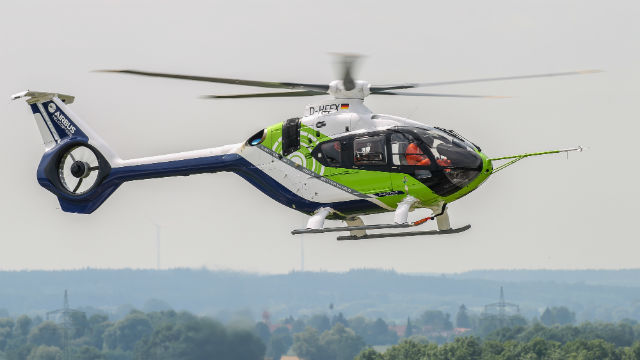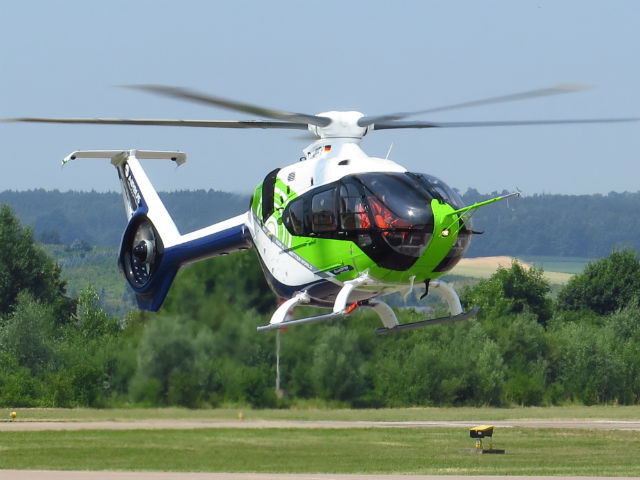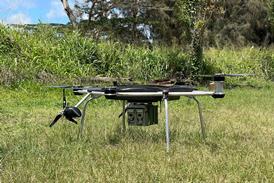“Maybe the biggest breakthrough is that there is no breakthrough.”
An odd choice of words with which to unveil your new technology demonstrator, perhaps, but for Airbus Helicopters chief technology officer Jean-Brice Dumont, that is very much the point.
None of the basket of technologies – “techno-bricks”, he calls them – utilised on the airframer’s Bluecopter rotorcraft, unveiled on 7 July, are particularly cutting edge, but each has been optimised to bring an incremental improvement to its performance.
And even the change that will inevitably attract the most interest – single engine operation – is, says Dumont “not an invention”.
“We are just bringing what was done previously closer to something that can be certificated on products,” he says.
SEO, he says, is relatively commonplace among military pilots, who may occasionally shut down one powerplant as a fuel saving measure on certain missions.
The airframer’s eventual goal is to automate the system so that in certain conditions one engine will be shut down automatically once the mode is selected. Dumont likens it to the “eco button” seen on many cars and suggests that it could offer fuel burn savings in the order of 25%.
So the innovation, he says, is adding “intelligence” to the system to automate it in order to maintain safety, particularly around the restart of the second turboshaft.
Or as chief test pilot Volker Bau puts it: “If there’s an emergency we need that second engine very, very fast.
“How do we bring it up very fast and finally how to we do that automatically?”

Airbus Helicopters
Marius Bebesel, programme manager research and innovation at the airframer, says the shut-down engine can be restarted within 20-30s using the regular starter generator, but other options are available. “It is a question of what we would like to have,” he says.
He alludes to research carried out using pressurised air that has enabled restart within 5s or the possibility of using a more powerful starter generator. “But there would be some impact on weight and cost. There is a trade-off.”
Besides, says Dumont, “customers will not opt for the luxury version, they just want an eco button”.
Work on modifying the engine control system to enable the change has been performed in conjunction with Pratt & Whitney Canada, whose PW206B2 turboshafts power the prototype.
It is, in theory, a modification that could be employed on any twin-engined rotorcraft, by any engine manufacturer, but at present Airbus Helicopters has an exclusivity agreement in place with P&WC, says Dumont. But he acknowledges that in the longer term, the concept could become more widespread.
Testing – and automation – of the SEO system will take place over the coming months as the manufacturer embarks on a second phase of test flights using the heavily modified H135 prototype.
Its eventual goal on the programme, which is largely self-funded but also draws on finance from Germany’s LuFo-IV research initiative and the European CleanSky project, is to cut fuel consumption by as much as 40% and reduce noise by 10dB.
As the majority of the “bricks” are platform agnostic, they could be employed on virtually any helicopter in the airframer’s line-up, says Dumont – the exception being the size-limited Fenestron shrouded tail rotor.

Dominic Perry/Flightglobal
He says the enhancements are at technology readiness level 6, “so they are ready for development, and then it is up to us which we pick and on which aircraft we install them. Some have a limit, others are transferable – it is very much a catalogue.”
With two programmes, the H160 and X6, currently in varying stages of development, Airbus Helicopters “will take [its] time” to analyse the results of the second flight-test effort that will conclude later this year “unless we find there is an immediate effect we can take on board with these developments”, says Dumont.
“We have a bit of time to see the best road map,” he says, acknowledging that some will feed into the two-year concept studies that are presently ongoing for its new X6 heavy rotorcraft.
The likely commercialisation of much of the technology fitted to the Bluecopter does appear to mark a change, however. Whereas previous demonstration efforts – the X3 high-speed rotorcraft, hybrid engines, and optionally piloted systems, for example – appeared almost an end in themselves, Airbus Helicopters seems much more commercially focused this time around.
Dumont points out that the X3 was a technological breakthrough, “a high step” to reach, whereas with Bluecopter it is different.
“I believe in it much more because we have a more manageable set of bricks,” he says.
Source: FlightGlobal.com
















